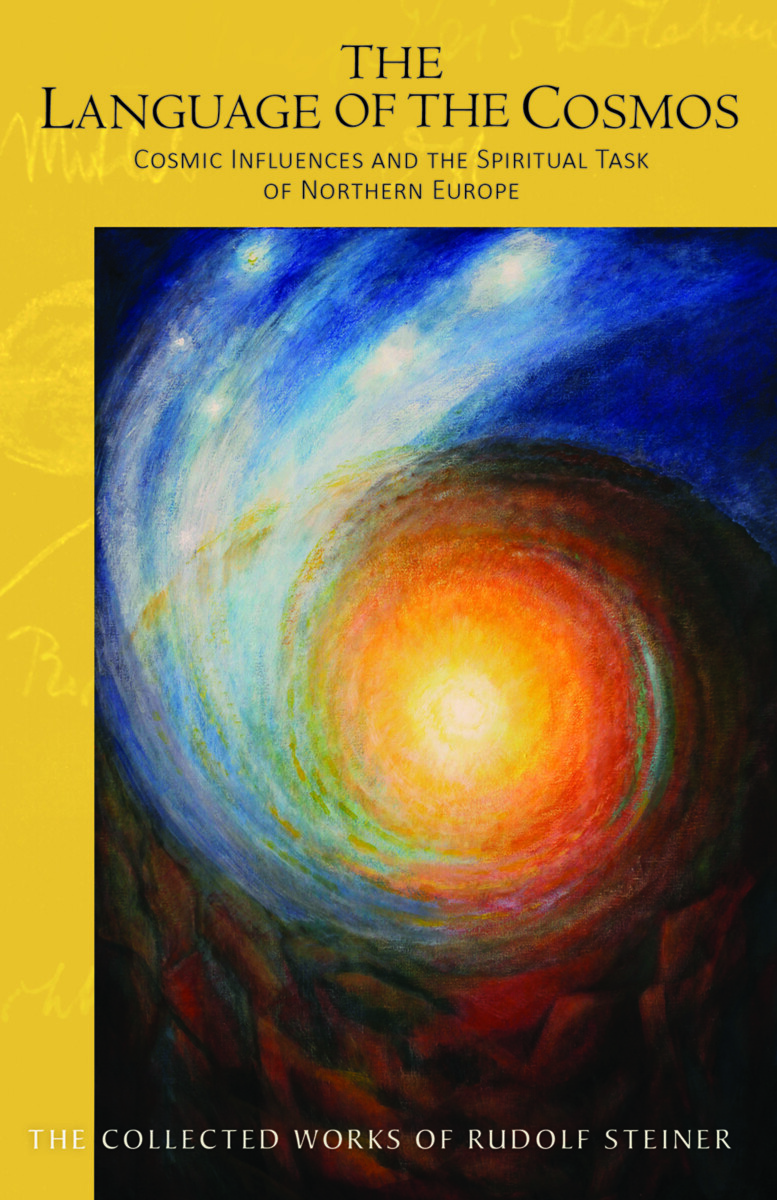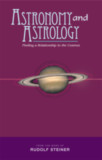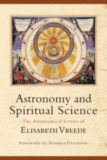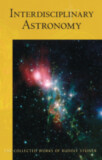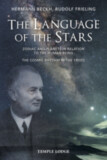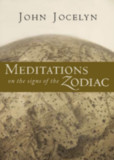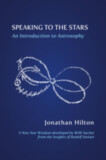The Language of the Cosmos
Cosmic Influences and the Spiritual Task of Northern Europe (CW 209)
- Publisher
SteinerBooks - Published
28th May - ISBN 9781621483427
- Language English
- Pages 256 pp.
- Size 6" x 9.25"
11 lectures in various cities, Nov. 24–Dec. 31, 1921 (CW 209)
“We are in this sense-perceptible world from the time of waking up until the time of falling asleep. Our soul is filled with the impressions made upon us by this sense-perceptible world. Now, when we enter sleep, we are no longer on this side of the sense world...in reality, we are then inside the things, we are then on the other side of this sense tapestry. But human beings living in their earthly consciousness know nothing of this and dream up all sorts of things presumed to exist beyond the realm of sense perception. They dream up molecules and atoms; but these are only dreams—dreams of the waking consciousness.” — Rudolf Steiner (lect. 2)
This previously untranslated volume in The Collected Works of Rudolf Steiner comprises eleven lectures given to members of the Anthroposophical Society in Norway, Germany, and Switzerland in November and December of 1921. In Rudolf Steiner’s biography, 1921 was a year of many trials. These lectures stand between the earth-shattering years of the First World War and the tragic destruction of the First Goetheanum. Indeed, precisely one year after the final lecture published in this volume, the Goetheanum—the house of the Word to which Steiner devoted all his forces—burned to the ground through an act of arson.
Though separated geographically, the lectures share a common thematic thread: the need for modern humanity, freely and out of inner initiative, to learn once again the language of the cosmos. This theme is taken up strikingly in the lecture of December 18, 1921, in which Steiner describes the spiritual reality of the human being not in familiar spiritual-scientific terms as consisting of physical body, etheric body, astral body, and “I,” but instead imbues these otherwise abstract designations with inner content—the physical body as an echo of the activity of zodiacal forces and expressed as cosmic consonants, while the etheric body reveals an echo of the weaving of planetary spheres in the realm of vowels.
This interplay of the planetary forces in vowels and the zodiacal forces in consonants—which accompany the soul on its descent to Earth—was once perceived instinctively by ancient humanity. It was understood that names are not given arbitrarily based on the whim of the parents but are designations that correspond to those planetary and zodiacal forces that played the greatest role in that individual’s path to earthly incarnation.
Abounding with penetrating insights, inspirations, and profound wisdom, this book speaks to all who seek a new understanding of humanity’s place in the universe.
This book is a translation from German by Agnes Schneeberg-de Steur of Nordische und mitteleuropäische Geistimpulse (2nd ed.), Rudolf Steiner Verlag, Dornach, Switzerland, 1982 (GA 209). Cover image: Schöpfung (Creation) by Ninetta Sombart (1925–2019), tempera on canvas, 55.5” x 112”. With gratitude to the Sombart family for their kind permission and to Thomas Spalinger, Raffael Verlag, for providing the image.
CONTENTS & SYNOPSES:
Introduction
PART I. Cosmic Influences and the Spiritual Task of Northern Europe
Lecture One: Nov. 24, 1921: Introductory remarks. The world situation and the spirituality of East and West. The lecture cycle of 1910 on the mission of European folk souls (CW 121). The hidden spirit of European culture. Immortality and “unbornness.” Reclaiming knowledge of the cosmos as a prerequisite for insight into human nature. The human configuration in its threefold form as a reflection of the fixed stars. Cosmic forces working from above, laterally, and through the earth, affecting the human head, chest, and limbs. The ancient archetypal occupations connected to the human limbs: hunter, shepherd, farmer, and merchant. The human “life levels” as they relate to the planetary sphere.
Lecture Two: Nov. 27, 1921: The sense tapestry of the world around us. The soul, spiritual life of the human being. The human being’s relationship to angelic beings and to the higher hierarchies. The importance of carrying ideals and love through the portal of death. Interaction between our angel and the archangel. The midnight hour of existence. Meeting with the Archai and higher hierarchies. How a human being becomes destined for a particular nation and language. The inner or outer determination of nationality and language, cosmopolitanism, and chauvinism. The need to reawaken the soul, spiritual element in our thinking.
Lecture Three: Dec. 4, 1921: How education must take into account the eternal nature of the human being. The multiplicity of spiritual reality. Differences in how northern and central Europeans perceived the events of 1914–1918. The fourth century in northern, southern, and central Europe. Migrations of the Norwegians to the southwest and the Swedes to the southeast around AD 900. The spiritual tasks of the Norwegian and Swedish people. Consequences of a rejection of the spiritual by the people of central and northern Europe.
PART II. Father-consciousness and Christ-consciousness
Lecture: Dec. 7, 1921: The nature of God-consciousness. Atheism as a symptom of illness. Intellectual civilization and the youth movement. “I”-consciousness and the importance of the moment of death. The nature of sickness and sin. Father concept and Son concept. The alphabet and the meaning of “alpha” and “beta.” The Greek tragedies as a means of healing and catharsis. The Roman–Latin influence in Europe. “Healthy” and “sick” as necessary concepts of a reality-based, future science of history. The concept of the extra-earthly Christ.
PART III. The Human Being as an Earthly and Cosmic Being
Lecture One: Dec. 12, 1921: The older generation and the youth movement. Intellectualism and the living wisdom of the child. The reason for the rebellious sentiments of young people toward adults. How people of the third post-Atlantean epoch experienced nature. The tragic mood of the initiates in the fourth post-Atlantean epoch. The experience of Paul before Damascus. “Healthy” and “sick” as the most essential concepts of the science of history.
Lecture Two: Dec. 18, 1921: The alphabet as an expression of the mystery of the human being. The letters as meaningful entities in Greek times and as abstract designations in Roman times. Poetry and prose in language. The human being as an image of the world of consonants, reflected in the physical body, and of the world of vowels, reflected in the etheric body. The influences of the zodiac and of the planets in the letters of the alphabet. The cosmic name of the human being and the calendar of saints. The seven liberal arts. Goethe’s longing for knowledge of the essence of Greek culture.
Lecture Three: Dec. 23, 1921: Dream consciousness in our feeling life, sleep consciousness in our will. The “un-reality” of human thoughts and conceptions. The human experience of freedom. Deeds of will as realities in the external world. For imaginative cognition, the body becomes similar to the soul and the soul becomes similar to the body. The “I” makes inner “drawings” in us with mineralized substances. Inspirative cognition observes the I going into the mineral part of the body when we think and out into the spiritual outer world when the will is active.
PART IV. The Festival of the Appearance of Christ
Lecture One: Dec. 24, 1921: The emergence in the East of the concept of maya in relation to the outer, physical world. The emergence in the West of the notion of “ideology” in relation to the inner life of thought. Buddha’s relationship to death six centuries before Golgotha. The symbol of the cross. The changed perception of death six centuries after Golgotha. Paul and the risen one. The opening words of the Gospel of John. How the Gospels announce the coming of Christ. “Not I, but Christ in me” will give inner reality to our thoughts. Gaining inner thought reality through the power of Christ leads to a new Christmas light.
Lecture Two: Dec. 25, 1921: The festival of the birth of Christ Jesus on December 25 and the festival of the appearance of Christ on January 6. Leonardo da Vinci’s Last Supper. The wisdom of the Gnostics. Turning point in the fourth century. Christian (Gnostic) thought wisdom replaced by Christian feelings. The Oberufer Christmas plays. Theology of the nineteenth century has become materialistic. Ranke and Harnack. Episode in the Giordano Bruno Society regarding Harnack. Christ as the sun being. The transformation of the Christmas festival into a world Christmas.
Lecture Three: Dec. 26, 1921: The date of the festival of Jesus’ birth instituted in the year 354 in Rome. The connection between the festival of birth and the pagan festival of the winter solstice. Wisdom superseded by the principle of love in the fourth century. The Adam-and-Eve Day. The tree of paradise and the cross on Golgotha. The Father God lives in the blood, the Son God in the soul and spirit of human beings. The antithesis of Caesar and Christ. Immortality and “unbornness.” The ancient initiates and the experience of seeing the sun at midnight. Christmas as celebration of the birth of a new Christ impulse.
PART V. Cosmic New Year
New Year’s Eve Lecture: Dec. 31, 1921: The science of initiation and how it has been transformed over time. The Greeks and the color blue. The Erinyes and conscience. Through the Greek initiation the pupil came to perceive a soulless nature and a spiritless inner human being. The pure thinking of The Philosophy of Freedom. The continuing development of modern consciousness. The spiritualization of the sensory world as unification of the outer and inner world. The temporal and the eternal.
Editorial and Reference Notes
Rudolf Steiner’s Collected Works
Significant Events in the Life of Rudolf Steiner
Index
Rudolf Steiner’s Blackboard Drawings
Rudolf Steiner
Rudolf Steiner (b. Rudolf Joseph Lorenz Steiner, 1861–1925) was born in the small village of Kraljevec, Austro-Hungarian Empire (now in Croatia), where he grew up. As a young man, he lived in Weimar and Berlin, where he became a well-published scientific, literary, and philosophical scholar, known especially for his work with Goethe’s scientific writings. Steiner termed his spiritual philosophy anthroposophy, meaning “wisdom of the human being.” As an exceptionally developed seer, he based his work on direct knowledge and perception of spiritual dimensions. He initiated a modern, universal “spiritual science” that is accessible to anyone willing to exercise clear and unbiased thinking. From his spiritual investigations, Steiner provided suggestions for the renewal of numerous activities, including education (general and for special needs), agriculture, medicine, economics, architecture, science, philosophy, Christianity, and the arts. There are currently thousands of schools, clinics, farms, and initiatives in other fields that involve practical work based on the principles Steiner developed. His many published works feature his research into the spiritual nature of human beings, the evolution of the world and humanity, and methods for personal development. He wrote some thirty books and delivered more than six thousand lectures throughout much of Europe. In 1924, Steiner founded the General Anthroposophical Society, which today has branches around the world.


